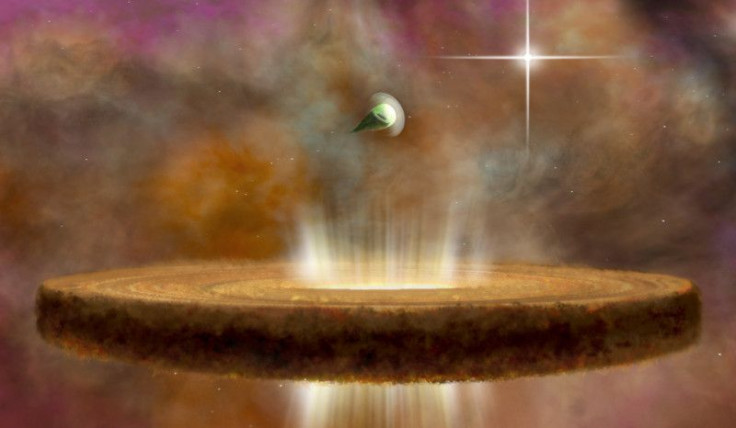‘Monster’ Stars In Orion Nebula Destroy Nascent Planets, UV Regions Are ‘Downright Hazardous’

The Orion Nebula is a known place where stars are born. Modern astronomers describe it as an enormous cloud of gas and dust that is located 1,300 light years away from Earth.
Some of these young stars and even younger protostars known as proplyds can develop into planets. New data collected by a team of astronomers in Canada and the United States reveal that protostars within a certain distance from highly luminous O-type stars can destroy the raw materials needed to form new planets.
"O-type stars, which are really monsters compared to our Sun, emit tremendous amounts of ultraviolet radiation and this can play havoc during the development of young planetary systems," Rita Mann, an astronomer with the National Research Council of Canada and lead author of the paper published in the Astrophysical Journal, said in a statement.
The team of astronomers collected data using the Atacama Large Millimeter/submillimeter Array (ALMA), an array of radio telescopes located in the Atacama desert in northern Chile.
"Using ALMA, we looked at dozens of embryonic stars with planet-forming potential and, for the first time, found clear indications where protoplanetary disks simply vanished under the intense glow of a neighboring massive star," Mann said.
The team found that protostars, or baby stars, that are within 0.1 light-years (about 600 billion miles) away from an 0-type star will have their raw material stripped away in just a few million years – faster than planets are able to form.
Massive, short-lived stars like O-type stars are essential to facilitate the ongoing process of star formation. When they explode as supernovas, they not only distribute dust and elements that will be used by the next batch of stars but they also provide the necessary boost for planet formation. But the large stars can be deadly if embryonic solar systems come too close.
"Massive stars are hot and hundreds of times more luminous than our Sun," James Di Francesco, from the National Research Council of Canada, said in a statement. "Their energetic photons can quickly deplete a nearby protoplanetary disk by heating up its gas, breaking it up, and sweeping it away."
While astronomers had seen images of proplyds in Orion taken from the Hubble Space Telescope, the data couldn’t reveal any information about the dust surrounding the stars.
The latest findings not only detected the dust and never-before-imaged proplyds, but they also were able to measure how much mass was in the propylds. Combining the new information with previous studies, the team of astronomers found that any protostar near the extreme-UV envelope of a massive star would have its surrounding disk destroyed.
"Taken together, our investigations with ALMA suggest that extreme UV regions are not just inhospitable, but they're downright hazardous for planet formation. With enough distance, however, it's possible to find a much more congenial environment," Mann said. "This work is really the tip of the iceberg of what will come out of ALMA; we hope to eventually learn how common solar systems like our own are."
© Copyright IBTimes 2025. All rights reserved.




















